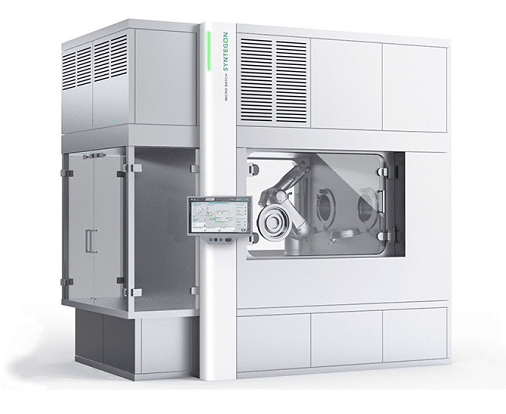Interview with Bernd Stauss, Senior Vice President Production/Engineering
1. What exactly is small scale batch manufacturing?
The developments in the pharmaceutical world are diverse. Today, drugs are often developed for specific patient groups, right down to the individual. In this context, we are talking about orphan drugs or personalized medicine, meaning that ever smaller production quantities are required. Small scale batch manufacturing defines batch sizes up to around 5,000 units.
 2. Why is this topic of interest for Vetter?
2. Why is this topic of interest for Vetter?
As a service provider, we need to be future-oriented. That is why we are continuously monitoring and reacting to new market trends and customer requirements. We must be in the position to adapt our range of services if, and when, necessary. When producing very small quantities, filling, process design and quality concepts present pharmaceutical service providers with new technical and economic challenges. That is why we intend to expand our existing portfolio with an innovative filling concept for small batch sizes.
3. How did Vetter proceed?
We had recognized this development trend as early as seven years ago, and anchored the topic as a key measure in our corporate strategy. We began by first assessing the market. What we found was a growing demand for flexible and regulatory compliant systems for the manufacturing of very small production quantities. With the next project step, we took a closer look at existing solutions. However, these were unable to meet the framework conditions that we had set, especially in terms of cGMP requirements. It was therefore decided to develop our own filling approach for small quantities in collaboration with a technical partner.
4. What was important in the choice of a suitable partner?
Above all was the need for technical know-how, especially in isolator technology. However, we also needed a strong business fit. For a successful collaboration, it was important to us to have a partner that also recognized the importance of “small batches” as a significant opportunity for the future. An intensive exchange of ideas began with Syntegon Technology GmbH. Linking Vetter’s know-how in process development for aseptic filling, as well as clean room technology (V-CRT©) with Syntegon’s expertise in the area of system and plant technology was essential for the success of the project.
 Image: Illustration of a flexible production cell
Image: Illustration of a flexible production cell
5. What exactly was the project objective?
Technically speaking, the objective is the development of an innovative, GMP-compliant and flexible production cell based on isolator technology to be used both, for the production of very small quantities of up to 50 units, as well as a “small filling line” for batch sizes of up to 5,000 units. Both in accordance with the requirements of Annex 1.
We are also developing a business concept for “Small Scale Batch Manufacturing” for Vetter. In addition to the technical requirements, the production of small quantities or personalized medicine requires numerous other requirements that are currently being evaluated by us.
6. What is the status quo of the project?
The flexible production cell is in the final construction phase. A realization project is planned to begin at Vetter next year.




















